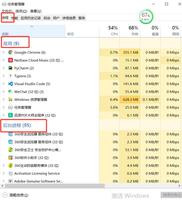Python中具有爱因斯坦求和约定的向量外积
要使用 Einstein 求和约定计算向量的外积,请使用Python 中的方法。第一个参数是下标。它将求和的下标指定为逗号分隔的下标标签列表。第二个参数是操作数。这些是操作的数组。numpy.einsum()
该einsum()方法评估操作数上的 Einstein 求和约定。使用爱因斯坦求和约定,可以以简单的方式表示许多常见的多维线性代数数组运算。在隐式模式下,einsum 计算这些值。
在显式模式下,einsum 通过禁用或强制对指定的下标标签求和,为计算可能不被视为经典 Einstein 求和操作的其他数组操作提供了更大的灵活性。
脚步
首先,导入所需的库 -
import numpy as np
arange()使用andreshape()方法创建一个 numpy 数组-
arr = np.arange(5)
显示数组 -
print("Our Array...\n",arr)检查尺寸 -
print("\nDimensions of our Array...\n",arr.ndim)获取数据类型 -
print("\nDatatype of our Array object...\n",arr.dtype)获得形状 -
print("\nShape of our Array object...\n",arr.shape)要使用 Einstein 求和约定计算向量的外积,请使用该方法。第一个参数是下标。它将求和的下标指定为逗号分隔的下标标签列表。第二个参数是操作数。这些是操作的数组 -numpy.einsum()
print("\nResult (outer product)...\n",np.einsum('i,j', np.arange(2)+1, arr))示例
import numpy as np输出结果# Creating a numpy array using the arange() and reshape() method
arr = np.arange(5)
# Display the array
print("Our Array...\n",arr)
# Check the Dimensions
print("\nDimensions of our Array...\n",arr.ndim)
# Get the Datatype
print("\nDatatype of our Array object...\n",arr.dtype)
# Get the Shape
print("\nShape of our Array object...\n",arr.shape)
# To compute outer product of vectors with Einstein summation convention, use the numpy.einsum() method in Python.
print("\nResult (outer product)...\n",np.einsum('i,j', np.arange(2)+1, arr))
Our Array...[0 1 2 3 4]
Dimensions of our Array...
1
Datatype of our Array object...
int64
Shape of our Array object...
(5,)
Result (outer product)...
[[0 1 2 3 4]
[0 2 4 6 8]]
以上是 Python中具有爱因斯坦求和约定的向量外积 的全部内容, 来源链接: utcz.com/z/297224.html





